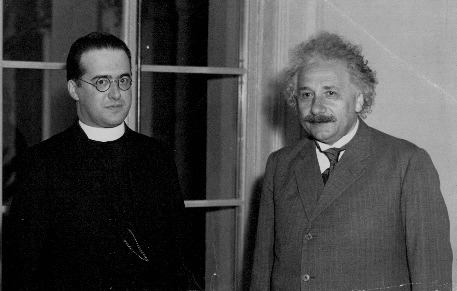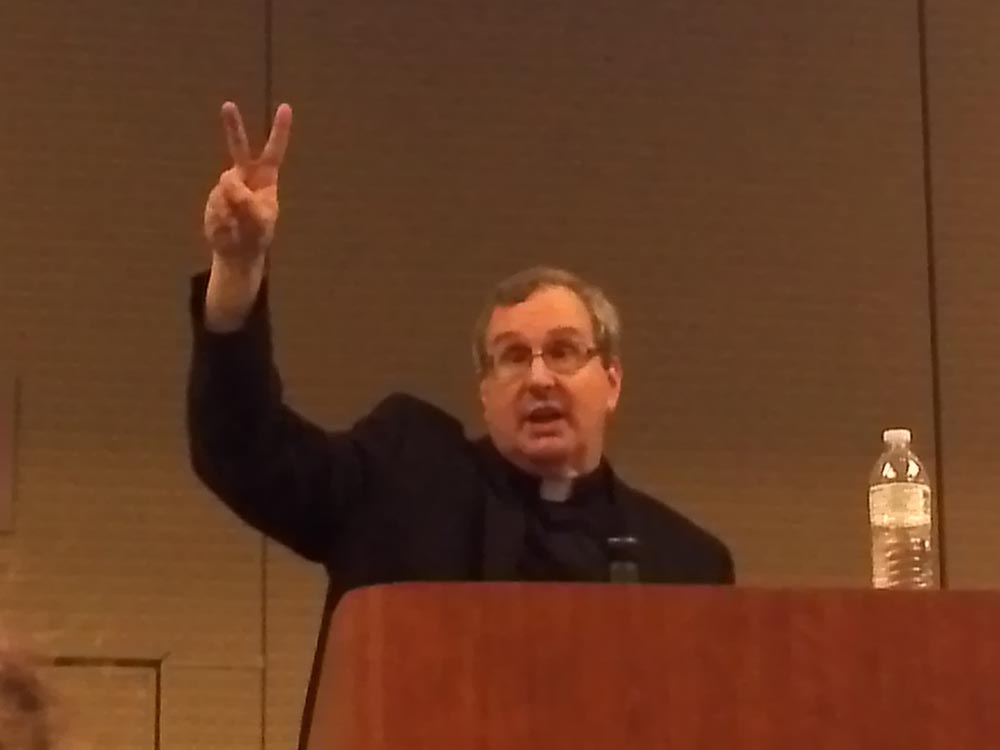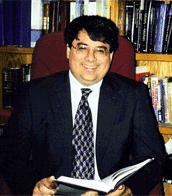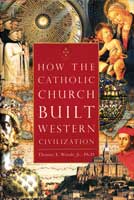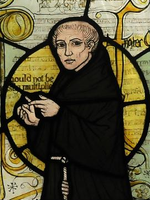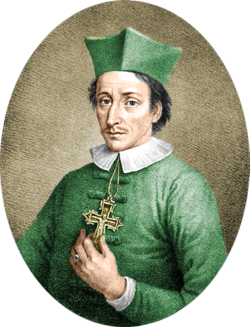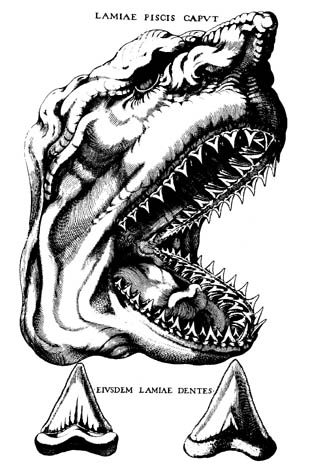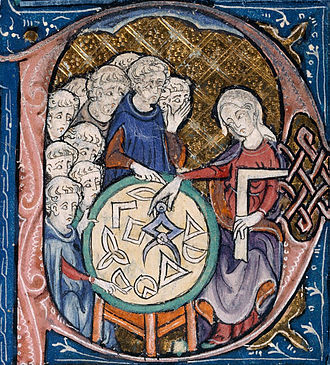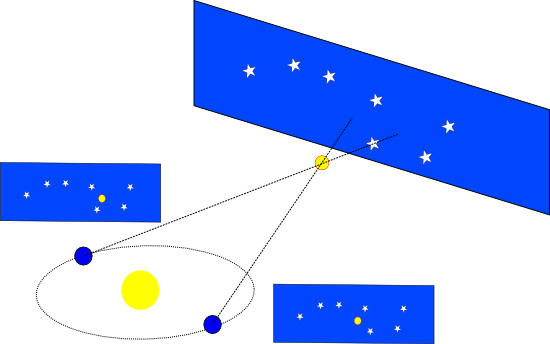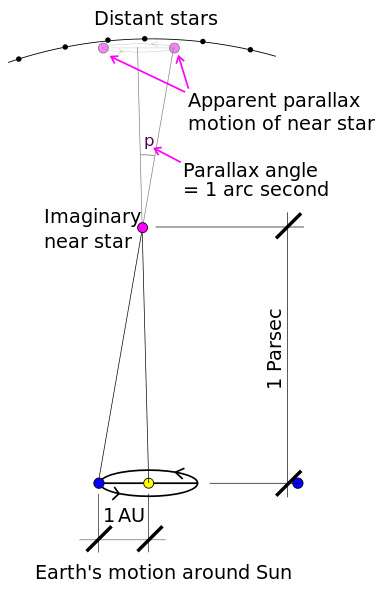Science
and Western Civilization’s
Debt to Catholic Church
Foundation For Science
Catholic Scientists
Galileo
The Catholic Church and Western Civilization - T. Woods
Stacy Trasancos Explains Fr. Stanley Jaki
Robert J. Spitzer, S.J. Ph.D
Many in our culture today claim, or worse just assume, that the Catholic Church stood in the way of scientific development. The book Da Vinci Code is just one example of this. In an interview on ABC Dan Brown, the author, states that Leonardo lived in a time when science was synonymous with heresy. This is a false characterization that is a common misconception among many. An objective examination shows that it was God’s Divine Revelation through His Church that made possible the scientific revolution and its subsequent discoveries which we enjoy today.
Good Bible exegesis is not only compatible with science it also has helped lay the foundation from which science was able to grow.
Of course, any good thing can be misused and this is true of the Bible just as it is true about science. Some have misused science to promote bad and harmful ideas. This even happens sometimes today. And there have been examples of the Bible being misinterpreted that placed valid scientific discoveries in a bad light.
Also, see sidebar articles on the Galileo case, which was an aberration to the norm.
Also see the Flat Earth Myth at this web site which explains how modern academia created their own fictionalized history in an attempt to discredit the previous generations and those of religious faith.
Catholic Order - the
Foundation for Science
Pagans
1 Kings 8:27 “… Behold, heaven and the highest heaven cannot contain thee”
Dr. Anthony Rizzi states that science grew out of Catholic Europe. It was the Judaic-Christian belief that God created an ordered world that was the foundation that enabled the scientific revolution to take hold and be manifest in Catholic Europe.
Although Aristotle, for example, made significant discoveries, his classical Greek culture was unable to maintain and nurture further development. The perspectives of the pagan culture in which he lived had certain draw backs. If the world was controlled by the whim of combative, immature, and impulsive pagan gods then there would be no real laws of nature to discover.
When the Jesuits went to China they were amazed at the Asians lack of progress in their understanding of the world. Some Muslims did make some progress in their discoveries, however it must be remembered that these people had been Christian centuries earlier before Mohammed came along in 6th century. And so, they had been influenced by the Christian perception of the world.
It was the Christian understanding that the world was both good and intelligible to us that laid the foundation for science to both take root and for this society to pass onto successive generations the discoveries that were made.
Another unique aspect of the a Judaic-Christian culture was the concept that time had a beginning. While the pagans viewed time as strictly cyclical, Western Europe informed by Divine Revelation viewed time as having a beginning and an end. The understanding that space-time-matter had been created by a Divine Law Giver has extremely positive ramifications.
Pagan cultures, on the other hand, created a view of the world that inhibited scientific advancement. The Pagans did not view the world as rational. They viewed things as being controlled by many gods and magical powers. They did not view the world as something that was governed by natural laws that could be discovered.
Hinduism, for example, which views every part of creation as being part of the one god does not lend itself to scientific experimentation. For example, if that chair or table is god it may not want me to experiment on it.
Whereas, the Divine Revelation of the Judaic-Christian culture, specifically that which was made manifest through the Catholic Church, did give rise to scientific thinking and progress. The world and all the physical things in it are created by a Father God. Physical objects are created outside of God Himself and are bound the Natural Law he made to govern them.
There were some great scientific minds that sprang up in other cultures, such as the ancient Greek, Roman, and Egyptian cultures to name a few, and there were some great minds in Islam as well who worked individually or in small groups. However, these societies did not have the culture to absorb and pass on those advancements to their successive generations the same way that Christian Europe could - whose culture had been greatly influenced by God’s Divine Revelation.
In the first few centuries it was illegal to be
a Christian. Once it was legalized, and the Church was able to fight off the invasions of the
Visigoths, Vandals, and other Barbarians and was able to establish peace
they were able to establish a Catholic culture.
Catholic Scientists
And so, this culture was able to start the university system around 1200 AD and was able to effectively pass on what was learned to successive generations.
Some of the most important universities were
founded by the Popes. They are located in Rome, Pisa, Ferrara, Toulouse,
Valladolid, Heidelberg, Cologne, and Erfurt. Many of the other
universities which are likewise quite old were begun by the combined
efforts of both Popes and princes. They are the Universities of Coimbra, Florence, Prague, Vienna, Cracow, Alcalá,
Upsala, Louvain, Leipzig, Rostock, and Tübingen, not to mention many
others.
St. Albert the Great, (circa 1200-80) was even called by that title,
“Great,” in his own lifetime and was later given the title of Universal
Doctor. Albert was one of the greatest intellectuals of
the Medieval times. He had encyclopedic type knowledge of biology,
chemistry, physics, astronomy, and geography. One of his treatises
proved that the earth was spherical in shape. He is also noted for his important
contributions in botany and zoology. He also wrote extensively
about logic, metaphysics, and mathematics, as well as, of course, about the Bible, and theology.
One of his most prestigious students was an Italian Dominican named
Thomas Aquinas, who became the most famous theologian in the high Middle
Ages. In addition to his religious accomplishments he also made
significant scientific contributions as well. He is noted for
contributions to the study of scientific methodology. Influenced by
Albert, he saw physics as a discipline prior to metaphysics, and even
necessary for the latter’s foundation.
Roger Bacon, (c. 1214–1294) a mediaeval Franciscan friar postulated the scientific method as we know it today, a cycle of "observation, hypothesis, and experimentation", and the need for "independent verification". Bacon later became a close friend and scientific correspondent of Pope Clement IV. And, his insights were not isolated, as had once been supposed. On the contrary ...
Encyclopedia Wikipedia states:
As a result, the picture of Bacon has changed. Bacon is now seen as part of his age ..."
Bacon was not a modern, out of step with his age, or a harbinger of things to come, but a brilliant, combative, and somewhat eccentric schoolman of the thirteenth century, endeavoring to take advantage of the new learning just becoming available while remaining true to traditional notions... of the importance to be attached to philosophical knowledge".
A recent review of the many visions of Bacon across the ages says contemporary scholarship still neglects one of the most important aspects of his life and thought: his commitment to the Franciscan order.
His Opus maius was a plea for reform addressed to the supreme spiritual head of the Christian faith, written against a background of apocalyptic expectation and informed by the driving concerns of the friars. It was designed to improve training for missionaries and to provide new skills to be employed in the defence of the Christian world against the enmity of non-Christians and of the Antichrist.
For instance, Bacon's idea that inductively derived conclusions should be submitted for further experimental testing is very much like
Robert Grosseteste's
'Method of Verification',[24] and Bacon's work on optics and the calendar also followed the lines of inquiry of Grosseteste (a scholastic philosopher, theologian, scientist and the Catholic Bishop of Lincoln and who preceded Bacon.) …Bacon is thus seen as a leading, but not isolated, figure in the beginnings of medieval universities at Paris and Oxford, among other contemporary exponents of this shift in the philosophy of science (as we call it today), including Grosseteste,
William of Auvergne (Catholic Bishop),
Henry of Ghent (Priest and Archdeacon),
(Saint) Albert Magnus ((AD. 1193-1280) also known as Albert the Great, and a Catholic Bishop),
(Saint) Thomas Aquinas (Dominican friar and priest and Doctor of the Church),
(Blessed) John Duns Scotus (Catholic Priest and theologian), and
William of Ockham (Franciscan friar and scholastic philosopher and theologian).[27]
In another article we read :
·
Bishop Robert Grosseteste (c. 1175 – 1253) –
Bishop Grosseteste was one of the most knowledgeable men of the Middle Ages; has
been called "the first man ever to write down a complete set of
steps for performing a scientific
experiment."[8]
8. Woods, Thomas E. (2005). How the
Catholic Church Built Western Civilization.
p. 95,
Washington, DC: Regnery.
·
Bishop Albertus Magnus (c. 1206–1280) –
Dominican friar and Bishop of Regensberg who has been described as
"one of the most famous precursors of modern
science in the High Middle Ages."[7]
Patron saint of natural sciences; Works in
physics, logic, metaphysics, biology, and psychology.
·
Fr. Jean Buridan (c. 1300 – after 1358) –
Priest who formulated the first and most fundamental of Newton's three
laws
three hundred years before Isaac Newton. He also
sowed the seeds of the Copernican revolution in Europe.
Making Science Possible
“Science owes to Christian faith the very spark that made Newtonian science possible. That science is based on the three laws of motion. Once those laws were formulated, a science was at hand which from that point on developed on its own terms, with no end to its progress, with no end to its ever new findings …
“But that irresistible progress needed a spark, the idea of inertial motion, which is the first and most fundamental of Newton's three laws.
“The formulation of the first law preceded Newton by more than three hundred years. It first appears in the commentaries … (by Rev.) John Buridan.”
Rev.Stanley Jaki
· Bishop Theodoric Borgognoni (1205–1298) – Dominican friar, Bishop of Cervia, and medieval Surgeon who made important contributions to antiseptic practice and anaesthetics
·
Fr. Theodoric of Freiberg
(c. 1250 – c. 1310) was a Dominican friar … and a theologian
and physicist.
He gave the first geometrical analysis of the
rainbow
·
Archbishop Thomas Bradwardine
(c. 1290 –1349) was Archbishop of Canterbury.
he is often called Doctor Profundus, (medieval epithet, meaning "the
Profound Doctor"). …
He was one of the scholars at Merton College
The mathematical physicist and historian of science Clifford Truesdell, wrote: [3]
The now published sources prove to us, beyond contention, that the main kinematical properties of uniformly accelerated motions, still attributed to Galileo by the physics texts, were discovered and proved by scholars of Merton college....
· Bishop Nicholas Oresme (c.1320–1382) – Bishop of Lisieux. He was the first person to graph a mathematical function. He showed how the motion of the Sun could be satisfactorily explained by the rotation of the Earth on its axis. … and probably one of the most original thinkers of 14th-century Europe.[5]…
· Georgius Agricola (1494 –1555) was a German Catholic, scholar and scientist. Known as "the father of mineralogy"… He was also elected burgomaster of Chemnitz.
(But do to the Protestant anti-Catholic violence of that time he was forced to resign his office. …
· Giovanni Alfonso Borelli (1608 –1679) was a Renaissance Italian physiologist, physicist, and mathematician. … eventually earning him the title of the Father of Biomechanics.
Queen
Christina of Sweden who had also been
exiled to Rome for converting to
Catholicism.
Borelli lived the rest of his years in poverty, teaching basic
mathematics at the school of the convent where he had been allowed to
live. The publication of his work was financed by Christina and his
benefactors at the convent.
· Anselmus de Boodt (1550–1632) – Canon who was one of the founders of mineralogy
·
Fr. Marin Mersenne, (1588–1648) –
was a French theologian, philosopher, mathematician and music theorist,
often referred to as the "father of acoustics" (Bohn 1988:225). Mersenne
was "the center of the world of science and mathematics during the first
half of the 1600s."[1]
Fr. Bonaventura Francesco Cavalieri (1598 –1647) He is
known for his work on the problems of optics and motion, work on
indivisibles, the precursors of infinitesimal calculus, and the
introduction of logarithms to Italy.
Cavalieri’s Principle in geometry partially anticipated and led the
way to integral calculus.
Fr. Giovanni Battista Riccioli (1598–1671) – Jesuit priest and the first person to measure the acceleration due to gravity of falling bodies. He discovered the first “binary” or double star.
·
Louis Pasteur
could rightly be described as the first stereochemist, having observed
in 1849 that salts of tartaric acid collected from wine production
vessels could rotate plane polarized light, but that salts from other
sources did not. This property, the only physical property in which the
two types of tartrate salts differed, is due to optical isomerism.
·
Fr. Pierre Gassendi (1592–1655) –
French priest, astronomer, and mathematician who published the first
data on the transit of Mercury; best known intellectual project
attempted to reconcile Epicurean atomism with Christianity
·
Fr. Jean Picard
(1620–1682) –
Priest and first person to measure the size of the Earth to a reasonable
degree of accuracy; also developed what became the standard method for
measuring the right ascension of a celestial object; The PICARD mission,
an orbiting solar observatory, is named in his honor.
·
Bishop Nicolas Steno,
Blessed
(1638–1686) –
Bishop beatified by Pope John Paul II who is often called the father of
geology[9]
and stratigraphy[7],
and is known for
Steno's principles.
He was a convert from Lutheranism. He also brought advances in the areas
of anatomy and paleontology.
·
Jean Mabillon (1632–1707) –
Benedictine monk and scholar, considered the founder of palaeography and
diplomatics
·
Fr. Valentin Stansel (1621–1705) –
Jesuit astronomer who made important observations of
comets
Fr. Roger Joseph Boscovich (1711–1787) –
Jesuit polymath known for his contributions to modern atomic theory
and astronomy
·
Fr. Joseph Bayma (1816–1892) –
Jesuit known for work in stereochemistry and mathematics
·
Fr. Alphonse Antonio de Sarasa (1618–1667) –
Jesuit mathematician who contributed to the understanding of logarithms,
particularly as areas under a hyperbola.
·
Fr. René Just Haüy (1743 –1822) was a French
mineralogist. He is often referred to as the
“Father of Modern Crystallography.” [1]
When the French Revolution broke out, Haüy was thrown into prison. He
was about to be killed, but Étienne Geoffroy Saint-Hilaire interceded
on his behalf. His name is one of the 72 names inscribed on the Eiffel
Tower. The mineral Hauyne was named for Haüy. His brother was
Valentin Haüy, the founder of the first school for the blind.
·
Fr. Giuseppe Piazzi (1746 –1826)
was an Italian Catholic
priest of the Theatine order, mathematician, and astronomer. He
established an observatory at Palermo. Perhaps his most famous
discovery was the first dwarf planet called
Ceres, the first known asteroid and the largest member of the
asteroid belt on 1 January 1801
He supervised the compilation of the Palermo Catalogue of stars, containing 7,646 star entries with unprecedented precision,[2] including the star names “Garnet Star” which is also called Mu Cephei which is 100,000 times brighter than the Sun, making it one of the most luminous red supergiants in the Milky Way. This work enabling Piazzi and collaborators to observe the sky methodically.
·
Augustin-Louis Cauchy,
(1789-1857)
France's finest mathematician, was an ardent Catholic.
·
Fr. Landell de Moura (1861–1928) –
Priest and inventor who was the first to accomplish the transmission of
the human voice by a wireless machine
·
Father Eugenio Barsanti
(1821 –1864),
also named Nicolò, was an Italian engineer, who together with Felice
Matteucci of Florence invented the first version of the internal
combustion engine in 1853.
·
Fr. Athanasius Kircher (1602–1680) –
Jesuit who has been called the father of Egyptology and "Master of a
hundred arts"; wrote an encyclopedia of China; one of the first people
to observe microbes through a microscope
Fr. Pietro Angelo Secchi, SJ (1818 –1878) was an Italian
astronomer and one of the founders of modern astrophysics, the man
who developed the spectral classification of stars that is still used
today. He was Director of the Observatory at the Pontifical
Gregorian University (then called the Roman College) for 28 years. He
was a pioneer in
astronomical spectroscopy, and was one of the first scientists to
state authoritatively that the Sun is a star.
He discovered three comets, including
Comet Secchi. He invented the heliospectrograph, star spectrograph,
and telespectroscope.
Starting in 1863, he began collecting the spectra of stars, accumulating
some 4,000 stellar spectrograms. Through analysis of this data, he
discovered that the stars come in a limited number of distinct types and
subtypes, which could be distinguished by their different spectral
patterns. From this concept, he developed the first system of stellar
classification: the five
Secchi classes. While his system was superseded by the Harvard
system, he still stands as discoverer of the principle of stellar
classification, which is a fundamental element of astrophysics.
The lunar crater
Secchi and the Martian crater
Secchi are both named after him, as is a main belt asteroid, 4705
Secchi.
The two
STEREO (Solar TErrestrial RElations Observatory)
spacecraft each carry an instrument package called SECCHI (Sun
Earth Connection Coronal and Heliospheric Investigation).
·
Ányos Jedlik (1800–1895) –
Benedictine engineer, physicist, and inventor; considered by Hungarians
and Slovaks to be the unsung father of the dynamo and electric motor
See Wiki List
Verbiest:
The Priest Who Invented the Automobile
Catholic Priest Scientists
This Rock
September 2008 - More details.
Robert Jastrow (1925 – 2008) was an American astronomer and planetary physicist. He was a leading NASA scientist. He struggled with concepts of God and described himself as “agnostic, and not a believer.” He came to realize that the beginning of the universe, and the Big Bang pointed to a Creator. He is quoted as saying
“For the scientist who has lived by his faith in the power of reason, the story ends like a bad dream. He has scaled the mountain of ignorance; he is about to conquer the highest peak; as he pulls himself over the final rock, he is greeted by a band of theologians who have been sitting there for centuries.”
25 Famous Scientists on God
by Javier Ordovas
Who says science and religion don't mix?
Not these Nobel laureates and pioneers in science. ...
A business card and a big surprise:
“A young college student was traveling in the same railway compartment as an elderly man who was praying his Rosary. The young man dared to confront him: "Instead of praying the Rosary, why don’t you take the time to learn and educate yourself a little more? I can send you an instructive book." The old man replied: "Please send me the book at this address, and he handed the young man his card. The card read: Luis Pasteur, Paris Institute of Science. The college student felt quite ashamed. He had planned to give advice to the most famous scholar of his time, the inventor of vaccines, esteemed worldwide and a devotee of the Rosary.”Read more:
25 Famous Scientists on God
Science Increasingly Makes the Case for God
Catholic Posters on:
•
Father George Lemaître
the Belgian priest who proposed the Big Bang theory
•
Father Gregor Mendel
the Augustinian friar who was the founder of the new science of genetics
•
Monk Guido d’Arezzo
the Medieval music theorist who invented musical notation as we know it
today
•
Maria Agnesi, became Nun
She was an Italian noble lady of great learning. Pope Benedict XIV
appointed her the first woman to hold the position of Math professor at
a university
For further reading see:
The Savior of Science or
The Origin of Science and the Science of its Origins,
by Stanley L. Jaki.
Also, as an overview of religion in
Western Civilization, Progress and Religion,
by Christopher Dawson.
As to the intelligibility of the world, see
City of God by Augustine and
Introduction to St. Thomas Aquinas, Anton C. Pegis, Ed.
“Remove justice, and what are kingdoms but gangs of criminals on a large
scale?”
St. Augustine, The City of God, Book IV, Chap. 5
|
FREE |
***********FREE Pamphlet
***********
Church Supports Science
by Fr.Williams
More on Debunking the Da Vinci Code:
|
Church + Science |
See Articles at
|
Church Promoted Science |
|
|
|
|
|
|
|
|
Fr. Georges Lemaitre and Albert Einstein Fr. Georges Lemaitre, a Catholic priest, was the
first scientist to propose what we now call the Big Bang Theory.
Later, after Fr. Georges Lemaitre gave a seminar on his new theory Einstein stood up applauded, and said,
Read More: 'A Day Without Yesterday': Georges Lemaitre & the Big Bang
Fr. Georges Lemaitre, 'Father' of the Big Bang Theory
What Can Science Tell us About Creation and Design?—A 12-Part Series
From Nothing to Cosmos Free Video #1: Free Study Guide Free The Workbook +
Scientific Evidence for God (Insights and Explanations)
Catholic Scientist Receives Recognition 90 Years Later
|
|
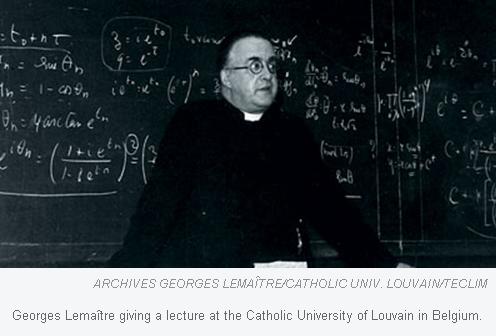 |
|
|
|
|
|
Robert J. Spitzer, S.J. Ph.D |
|
|
|
|
by Rodney Stark, professor of sociology at So, why does the fable of the Catholic Church’s ignorance and opposition to the truth persist? Because the claim of an inevitable and bitter warfare between religion and science has, for more than three centuries, been the primary polemical device used in the atheist attack on faith. … Science consists of an organized effort to explain natural phenomena. Why did this effort take root in Europe and nowhere else? Because Christianity depicted God as a rational, responsive, dependable, and omnipotent being, and the universe as his personal creation. The natural world was thus understood to have a rational, lawful, stable structure, awaiting (indeed, inviting) human comprehension. … Tertullian, one of the earliest Christian theologians (c. 160-225), instructed that God has willed that the world he has provided “should be handled and understood by reason.” ... Saint Augustine (354-430) held that reason was indispensable to faith: “Heaven forbid that God should hate in us that by which he made us superior to the animals!…” Saint Thomas Aquinas (c. 1225-1274) attempted in his monumental Summa Theologiae to fulfill Augustine’s optimism that some of these “matters of great importance” could be grasped by reason …he argued they may reason their way to knowledge step-by-step, using principles of logic. This is the methodology of science... To sum up: The rise of science was not an extension of classical learning. It was the natural outgrowth of Christian doctrine: Nature exists because it was created by God. In order to love and honor God, it is necessary to fully appreciate the wonders of his handiwork. Moreover, because God is perfect, his handiwork functions in accord with immutable principles. By the full use of our God-given powers of reason and observation it ought to be possible to discover these principles. These crucial religious ideas were why the rise of science occurred in Christian Europe, not somewhere else.” This piece
is excerpted from a longer piece,
“The truth is that science arose only because the doctrine of the
rational creator of a rational universe made scientific inquiry
plausible.” R. Stark Also see Clement of Rome, |
|
|
|
|
William of Ockham |
|
|
|
|
|
|
|
|
Portrait of Blessed
Illustration from Steno's 1667 paper comparing the teeth of a shark head with a fossil tooth |
|
|
|
|
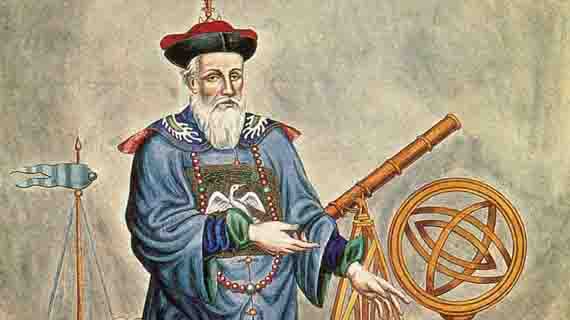 |
|
|
Father Verbiest: |
|
|
Job 28:23-25 |
|
|
|
|
“The truth is that science arose only because the doctrine of the rational creator of a rational universe made scientific inquiry plausible.” R. Stark
Read : Why Did Science Develop in West ? How Catholic Teaching Led to Scientific Advancement
CCC
299
CCC 354
Pagans viewed their gods as being part of the world. They assumed time
had always been, that it never had a beginning. Events were controlled
by the whims of these gods who were within time and space. The Catholic
Church was able to overcome these false pagan prejudices by divine
revelation. She rejected the pantheistic doctrine of eternal cycles. She
knew that God was not constrained by time and space because He created
both time and space. And He created the world out of nothing. God is
outside of time and space.
|
|
|
|
|
|
Personification of Geometry teaching the monks. Bishop of Wells, John de Villula, was likely the one who inspired Adelard of Bath (died AD 1152) to leave England and begin his extensive travels. Adelard translated into Latin Euclid’s Elements, one of the most widely popular and published books. For centuries, when the quadrivium was included in the curriculum of all university students, knowledge of at least part of Euclid’s Elements was required of all students. Not until the 20th century, by which time its content was universally taught through other school textbooks, did it cease to be considered something all educated people had to read. The above is the frontispiece of the oldest surviving copy of his work from about AD 1316. That is, this picture laid to the left side when the book was opened so that the Title page was on the right.
Stacy Trasancos writes a 6 part series explaining expounding on Fr. Stanley Jaki’s explanation of how Christianity laid the foundation for science.
Fr. Jaki and the Stillbirths of Science
The Biblical Basis of Western Science
Why did science make little real progress in Europe in the Middle Ages?
Retelling the Story of Science
Modern Physics & Ancient Faith I:
Modern Physics, the Beginning, and Creation: The Christian roots of modern science
An Absentee God?
Myth 2: Religion Does More Harm Than Good
Science and the Church
|
|
| See Catholic Bibles in Middle Ages | |
|
Galileo
Nicolaus Copernicus, a Polish Catholic monk, published his theory in AD 1543 that the earth revolves around the sun which is in the center of our solar system. 70 years later, Galileo tried to advance that same theory. Although he was at first supported by Church officials his ideas were later rejected. Best Science of the Day In Galileo's time the best science of the day, the Stellar Parallax, seemed to prove that Galileo was wrong.
It was known that if he was right, and if the earth revolved around the Sun, then from the vantage point of the earth the stars in the near background would shift in position against the stars in the far background. However, there was NO measurable movement of the near stars in relation to the distant stars. See chart below for the evidence for which the scientists were looking. Why Did Stellar Parallax Seem to Prove Galileo Was Wrong ? |
|
|
|
|
| In Galileo's time the scientists could find no such shift in position. And so, the science of that time period seemed to prove that Galileo was wrong. He was dumbfounded and he could offer no explanation why there was no apparent shift in position. Second illustration of Stellar Parallax |
|
|
|
|
|
Wkipedia reports : The angles involved in these calculations are very small and thus difficult to measure. The nearest star to the Sun (and thus the star with the largest parallax), Proxima Centauri, has a parallax equal to the angle that is approximately that of an object 2 centimeters in diameter located 5.3 kilometers away. The Galileo case is a complicated one. See articles below. Why do those who wish to attack the Catholic Church always raise the case of Galileo ? Because in 2000 years, this is about their only case. It was like the counsel of Cardinal Baronius later quoted by Galileo: the Scriptures teach us how to go to heaven, not how the heavens go.
The Galileo Affair : What is the most misunderstood historical event?
How Galileo Brought His Troubles With The Church On Himself
Galileo
Errors of Galileo |
|
|
***********FREE Pamphlet
***********
|
